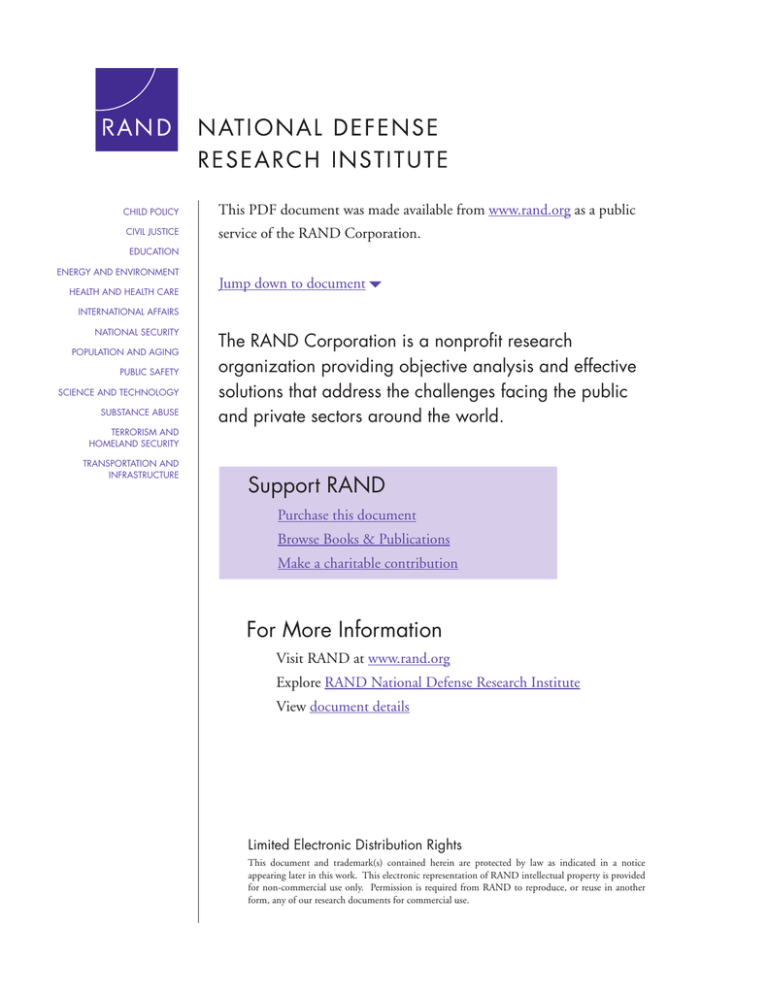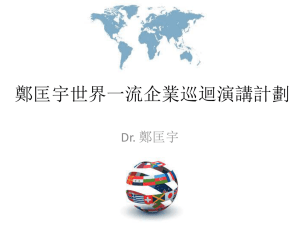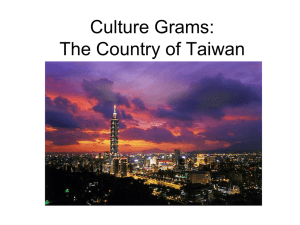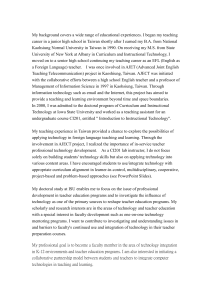
CHILD POLICY
CIVIL JUSTICE
This PDF document was made available from www.rand.org as a public
service of the RAND Corporation.
EDUCATION
ENERGY AND ENVIRONMENT
HEALTH AND HEALTH CARE
Jump down to document6
INTERNATIONAL AFFAIRS
NATIONAL SECURITY
POPULATION AND AGING
PUBLIC SAFETY
SCIENCE AND TECHNOLOGY
SUBSTANCE ABUSE
TERRORISM AND
HOMELAND SECURITY
TRANSPORTATION AND
INFRASTRUCTURE
The RAND Corporation is a nonprofit research
organization providing objective analysis and effective
solutions that address the challenges facing the public
and private sectors around the world.
Support RAND
Purchase this document
Browse Books & Publications
Make a charitable contribution
For More Information
Visit RAND at www.rand.org
Explore RAND National Defense Research Institute
View document details
Limited Electronic Distribution Rights
This document and trademark(s) contained herein are protected by law as indicated in a notice
appearing later in this work. This electronic representation of RAND intellectual property is provided
for non-commercial use only. Permission is required from RAND to reproduce, or reuse in another
form, any of our research documents for commercial use.
This product is part of the RAND Corporation technical report series. Reports may
include research findings on a specific topic that is limited in scope; present discussions of the methodology employed in research; provide literature reviews, survey
instruments, modeling exercises, guidelines for practitioners and research professionals, and supporting documentation; or deliver preliminary findings. All RAND
reports undergo rigorous peer review to ensure that they meet high standards for research quality and objectivity.
Shanghaied?
The Economic and Political
Implications of the Flow
of Information Technology
and Investment Across
the Taiwan Strait
MICHAEL S. CHASE, KEVIN L. POLLPETER,
JAMES C. MULVENON
TR-133
July 2004
Supported by the RAND National Security Research Division
Approved for public release; distribution unlimited
This research in the public interest was supported by the RAND National Security Research
Division, a division of the RAND Corporation.
Library of Congress Cataloging-in-Publication Data
Chase, Michael.
Shanghaied? : the economic and political implications of the flow of information technology and investment
across the Taiwan Strait / Michael S. Chase, Kevin L. Pollpeter, James C. Mulvenon.
p. cm.
“TR-133.”
Report of research conducted within the Intelligence Policy Center of RAND’s National Security Research
Division (NSRD).
Includes bibliographical references and index.
ISBN 0-8330-3631-9 (pbk. : alk. paper)
1. Investments, Foreign—China. 2. Technology transfer—China. 3. Information technology—China. 4.
China—Foreign economic relations—Taiwan. 5. Taiwan—Foreign economic relations—China. I. Pollpeter,
Kevin. II. Mulvenon, James C., 1970– III.Title.
HG5782C4313 2004
332.67'351249052—dc22
2004009679
The RAND Corporation is a nonprofit research organization providing objective analysis
and effective solutions that address the challenges facing the public and private sectors
around the world. RAND’s publications do not necessarily reflect the opinions of its research
clients and sponsors.
R® is a registered trademark.
© Copyright 2004 RAND Corporation
All rights reserved. No part of this book may be reproduced in any form by any electronic or
mechanical means (including photocopying, recording, or information storage and retrieval)
without permission in writing from RAND.
Published 2004 by the RAND Corporation
1700 Main Street, P.O. Box 2138, Santa Monica, CA 90407-2138
1200 South Hayes Street, Arlington, VA 22202-5050
201 North Craig Street, Suite 202, Pittsburgh, PA 15213-1516
RAND URL: http://www.rand.org/
To order RAND documents or to obtain additional information, contact
Distribution Services: Telephone: (310) 451-7002;
Fax: (310) 451-6915; Email: order@rand.org
- xiii -
SUMMARY
This report examines the controversial issue of flows of
information technology and investment between Taiwan and China, with a
particular focus on the semiconductor industry. The goals of this report
are threefold: (1) to comprehensively analyze the investment and IT
transfer dynamic between Taiwan and China; (2) to assess the impact of
these developments for cross-Strait relations, the global semiconductor
industry, and the advancement of science and technology development in
China; and (3) to evaluate the implications of the findings for U.S.
government analysis and policymaking, particularly in the area of hightechnology export controls.
OVERALL TRENDS IN CROSS-STRAIT FLOWS OF CAPITAL AND TECHNOLOGY
IT Production and Trade
The scope and scale of trade and investment flows across the Taiwan
Strait has increased dramatically in recent years, driven in large part
by the increasing integration of the information technology sectors of
Taiwan and the People’s Republic of China (PRC). Taiwanese IT companies
began to shift production of labor-intensive products--including
keyboards, mice, monitors, motherboards, and power-supply units--to
offshore locations in the late 1980s and early 1990s to take advantage
of lower labor costs in China and Southeast Asia.
•
In 2002, more than 49 percent of Taiwan’s IT hardware was made
in China, and Taiwanese-invested companies produced more than
70 percent of the electronics made in China.
•
The share of Taiwan’s IT hardware production in mainland China
reached 60 percent in 2003, while the share of Taiwan’s IT
hardware production remaining in Taiwan declined further, to
about 26 percent, according to industry analysts.
•
China’s displacement of Taiwan as the world’s third-largest
producer of IT hardware items has touched off a debate in
- xiv -
Taiwan about the supposed “hollowing out” of the island’s
economy.
On the demand side, China now accounts for 13 percent of the
world’s demand for semiconductors, up from 7 percent in 2000. In
addition, in the first quarter of 2003, China accounted for 11 percent
of worldwide purchases of semiconductor manufacturing equipment.
•
Manufacturers in China purchase $12 billion worth of
semiconductors annually, of which approximately two-thirds
are used in exports and one-third is used for goods sold
domestically.
•
Current domestic Chinese production is estimated to be able
to supply a mere 10-20 percent of domestic demand.
•
By 2010, China will become the world’s second-largest
semiconductor market, and by the end of 2003 it will have 12
percent of the production capacity of all semiconductor
foundries worldwide, making it an increasingly important
player in the global market for made-to-order chips.1
•
It has been estimated that as of 2004 China will require $24
billion worth of semiconductors. China’s semiconductor market
is estimated to increase at an annual rate of 25 percent.
Investment
Taiwanese investment on the mainland has been growing rapidly in
recent years, although widespread circumvention of Taipei’s restrictions
on money flows makes the actual level of investments difficult to
estimate.
•
In early 2003, the Taiwanese government estimated that total
approved investment in China by Taiwanese firms had reached
about $30 billion.
____________
1 Foundries are companies that produce semiconductors on order for
chip designers.
- xv -
•
The most recent Chinese government estimate of total Taiwanese
investment in the mainland is about $61.5 billion, ranking
Taiwan as China’s third largest source of foreign direct
investment.2
•
Some economists and Western banking analysts estimate the total
Taiwanese investment in the mainland may be as high as $70-100
billion.
•
Most observers expect Taiwanese businesses--especially
companies in the island’s IT sector--to continue to skirt
regulations while at the same time pressing Taipei for further
concessions.
Taiwanese companies are investing in China for several reasons: to
take advantage of lower production costs, especially land, labor, and
construction costs; to take advantage of the increasingly large pool of
skilled Chinese engineers and technicians; to gain access to the Chinese
domestic market; as part of an “investment cluster effect;”3 and because
of preferential tax policies and other incentives offered by the Chinese
central government and local governments.
The most prominent change in regional investment patterns is a
shift in the concentration of Taiwanese investment from the Pearl River
Delta to the greater Shanghai region.
•
As a result of this growing influx of investment, Jiangsu by
the end of 2002 had surpassed Guangdong in terms of total
approved investment from Taiwan.
•
As for the impact of severe acute respiratory syndrome (SARS)
on cross-Strait ties, some analysts predicted that the crisis
would slow economic integration between China and Taiwan.
____________
2 Foreign direct investment refers to investment by foreign
companies in companies, facilities, and equipment. It does not include
investments made in stocks or equities.
3 Investment clustering refers to the concentration in some
geographic area of firms that are engaged in various aspects of a given
business. Investment clusters form because the concentration of firms in
a given location supports the development of specialized suppliers,
allows labor market pooling, cuts down on transportation, and
facilitates knowledge spillovers, all of which help to reduce costs.
- xvi -
Rather than causing cross-Strait economic ties to unravel,
however, the SARS crisis ultimately underscored their
durability and resilience.
POLICY RESPONSES IN TAIPEI AND BEIJING
Taipei
For the Taiwanese government, growing trade with China raises
concerns that the island’s economy is becoming too dependent on the
mainland. The economic relationship between China and Taiwan has thus
become a sensitive issue in Taiwanese politics. Domestically, President
Chen Shui-bian faces a difficult political balancing act. He faces
pressure from the business community and from the opposition parties-the Kuomintang and People’s First Party--to further ease restrictions on
investment and to pursue the establishment of direct cross-Strait links.
He also faces countervailing pressure from some of his own Democratic
Progressive Party (DPP) constituents and allies in the pro-independence
Taiwan Solidarity Union who fear that increasing economic integration
with the mainland will increase unemployment among grassroots DPP
supporters and diminish Taiwan’s prospects for political independence.
•
Taipei has agreed to the “mini-three links,” which permit
direct shipping and passenger travel between the Taiwanese-held
offshore islands of Kinmen and Matsu and the mainland cities of
Xiamen and Fuzhou, and some Taiwanese analysts expect Chen to
cave in to pressure to establish the full “three links,”4 which
would allow direct shipping and air travel between the island
and the mainland.
•
In the months before Taiwan’s March 2004 presidential election,
however, President Chen resisted demands to permit direct
cross-Strait shipping and air travel as part of an election
____________
4 The term “three links” (santong) refers to the direct
transportation, trade, and postal links between Taiwan and China. These
links were severed in 1949, when the Nationalist government retreated to
Taiwan after losing control of the mainland to the Communists, and have
not yet been reestablished.
- xvii -
strategy designed to solidify the support of his proindependence constituents.
However, Taipei has relaxed other longstanding restrictions on
cross-Strait economic interaction. After more than a year of acrimonious
political debate and extensive lobbying efforts by major Taiwanese
semiconductor companies, including industry leaders Taiwan Semiconductor
Manufacturing Corporation (TSMC) and United Microelectronics Corporation
(UMC), the Taiwanese government early in 2002 relaxed its ban on
investment in semiconductor facilities on the mainland.
•
In September 2002, TSMC became the first Taiwanese
semiconductor company to apply for permission to set up a
manufacturing plant in China. TSMC plans to start production at
its Shanghai plant in late 2004, but its sense of urgency has
diminished given the relatively slow maturation of potential
Chinese competitors.
The debate over chip policy brought to the forefront longstanding
concerns about loss of technology and skilled personnel to the mainland.
In response, the Taiwanese government in April 2002 began drafting a
National Technology Protection Law (guojia keji baohu fa).
•
Taiwanese executives seem resigned to the eventual passage of
the law, although many say it is unnecessary.
•
Given concerns about the difficulties of protecting
intellectual property in China, TSMC and UMC would not build
semiconductor fabrication facilities (or “fabs” for short) in
China to produce 12-inch semiconductor wafers (the new standard
for integrated circuits [ICs]) even if they were allowed to do
so, according to industry executives.
•
Taipei is also facing pressure from the business community to
permit Chinese nationals to work for high-technology companies
in Taiwan, which is prohibited by current regulations.
Taiwanese executives say that Chinese engineers are needed to
- xviii -
fill jobs left vacant by a shortage of qualified specialists in
Taiwan.
Beijing
Chinese leaders have recognized semiconductors as a strategic highgrowth industry because of the fundamental role they play in information
technology and high-technology weaponry. They view the development of
the semiconductor industry as being vital to economic development and
national security and are unwilling to cede the growing Chinese chip
market to foreign companies or to depend on foreign suppliers for the
chips China needs for defense and intelligence applications. Until
recently, however, semiconductors had remained the weakest link in the
Chinese electronics industry, as measured by the Chinese IT industry’s
progress toward the global state of the art.
According to the 10th Five Year Plan, the goal for national IC
production is to reach 20 billion wafers by 2005, with sales between
60-80 billion Renminbi (RMB), constituting 2-3 percent of worldwide
sales of wafers. The plan also calls for meeting 30 percent of domestic
demand, with IC production for national defense and national economic
security being principally domestic based. The 10th Five Year Plan also
calls for the following:
•
Eight-inch wafers with 0.25-micron process technology will become
the new standard.5 In pursuit of this goal, China plans to build
o
Two or three 6-inch wafer fabs
o
Three to five 8-inch wafer fabs capable of manufacturing
0.18-micron to 0.35-micron process technology
o
One or two 12-inch wafer fabs capable of manufacturing
0.13-micron to 0.18-micron process technology.
•
Companies investing more than 8 billion RMB to build IC fabs
capable of manufacturing wafers with better than 0.25-micron
process technology are taxed at a lower rate of 15 percent, along
____________
5 The worldwide semiconductor manufacturing industry, meanwhile, is
moving toward a more advanced standard of 12-inch wafers and 0.13-micron
to 0.18-micron and lower process technology, placing China’s planned
efforts at least one generation behind state-of-the-art levels.
- xix -
with a partial refund of the 17 percent value-added tax (VAT),
resulting in a net rate of 6 percent tax. The United States has
charged that the higher VAT on imported semiconductors violates
China’s World Trade Organization commitments and gives an unfair
advantage to companies that locate their manufacturing facilities
on the mainland.
Other policies have been developed to promote the Chinese IC
industry. For example, IC manufacturers and software enterprises are
eligible to receive a two-year corporate tax exemption starting from the
first profit-making year, followed by a 50 percent reduction the next
three years. This benefit, known as the “2 + 3 plan,” will be withdrawn
if a company ceases operation within the first ten years.
Intense competition exists among Chinese cities to attract
semiconductor industry investment, with the competition mainly between
Shanghai and Beijing.
•
Shanghai has a “5 + 5” policy of offering wafer manufacturers
a five-year tax holiday and an additional five years at half
the tax rate, in addition to other incentives.
•
Beijing offers a mix of incentives, including a “Shanghai
+ 1” plan, which offers to better any financial incentive
offered by Shanghai by an additional year.
Both Shanghai and Beijing have announced goals of attracting
certain numbers of IC fabs that far exceed the goals announced in the
10th Five Year Plan.
•
Beijing, for example, plans to build five to eight 8-inch
wafer fabs capable of producing 0.25-micron technology by
2005 and plans to build another ten advanced-product lines by
2010.
•
Shanghai, by comparison, plans to build approximately ten IC
fabs capable of manufacturing 8-inch wafers with 0.35-micron
technology by 2005.
- xx -
•
If both plans are realized, the total number of IC fabs in
Shanghai and Beijing alone could increase the original plan
for building ten fabs to as much as 15 fabs by 2005.
ASSESSMENT OF KEY ANALYTICAL QUESTIONS AND POLICY IMPLICATIONS
Is the Mainland “Hollowing Out” Taiwan’s Economy?
Taiwan’s economy faces serious structural problems, but these
problems cannot be entirely blamed on flows of technology and investment
to the mainland. Instead, government budget deficits, state dominance of
the banking sector and an excess of non-performing loans, and the
effects of the global economic downturn--especially given Taiwan’s
dependence on IT exports to the United States, which is also in the
midst of a sluggish economy--are the real culprits. The cross-Strait
dynamic has instead led to a new division of labor across the Strait,
with the Taiwanese conducting research and development (R&D), producing
key components, and taking orders on the one side, and the mainland
producing and assembling products on the other side.
What Are the Implications of Increasing Economic Integration for CrossStrait Relations?
Many commentators have argued that China’s desire to attract
investment and technology from Taiwan will decrease the likelihood of
conflict in the Taiwan Strait by making the costs of any potentially
provocative move prohibitively high for both sides. Yet increasing
economic integration is far from a guarantee of peace in the Taiwan
Strait. Chinese leaders might very well be willing to bear the economic
costs of a conflict if they calculated that military action was
necessary to prevent the permanent separation of Taiwan from the
mainland. Moreover, Beijing might believe that only minimal economic
disruption would result from a coercive use of force against the island
designed to achieve limited political objectives.
What Are the Implications of Cross-Strait IT Flows for the Greater China
Semiconductor Industry?
While the global IT market continues to be depressed, China is a
notable outlier as one of the few growth markets. In semiconductors, the
- xxi -
greater China region will increasingly be the locus for the global IC
foundry industry. Successful integration of the greater China
semiconductor industry will therefore likely have a dramatic effect on
the trajectory and ultimate recovery of the global semiconductor market.
Yet, domestic Chinese semiconductor companies will face serious
challenges as they attempt to compete with established Taiwanese foundry
giants. Concerns about intellectual property security are making some
chip designers reluctant to outsource production to mainland-based
firms. Meanwhile, Taiwanese companies will likely rise to a higher place
on the technology food chain, moving lower-end design and production to
China and conducting cutting-edge R&D on the island.
In terms of technology levels on the mainland, at least one fab in
China (Semiconductor Manufacturing International Corporation) is
currently producing near-state-of-the-art 8-inch wafers with 0.18-micron
technology, which is roughly one generation behind efforts at Intel,
IBM, UMC, and TSMC, which are already producing chips with 0.13-micron
technology and have plans to produce chips with 90-nanometer technology.
Intel does not have any plans to move their most advanced fabs to China,
and TSMC and other Taiwanese-based chipmakers are approaching China
slowly. Even after they receive approval from the Taiwan government, it
will take some time for Taiwanese companies to move their fabs to China.
Meanwhile, many companies are slowing down their plans for
production of state-of-the-art 12-inch wafers due to sluggish global
demand. The reason that companies are producing 12-inch wafers at
present is largely that they are trying to position themselves in the
market so that they are ready when the global IC market picks up,
according to industry analysts. As a result of the high costs associated
with 12-inch wafer facilities and production, few players will be
successful and stay in the market. In fact, costs of production at that
level are so high that they will likely prevent many aspirants from
breaking into the field even if they can acquire the necessary
technology.
- xxii -
What Are the Implications of Cross-Strait Integration for Hong Kong?
Hong Kong has been the most important conduit for cross-Strait
trade for more than two decades. Yet, Hong Kong would be the single
largest loser as a result of direct links between China and Taiwan. The
establishment of direct transportation links between China and Taiwan
would result in a loss of about 5 to 6 percent of the shipping traffic
in Hong Kong and several nearby Chinese ports for the first few years.
Air traffic through Hong Kong, such as Cathay Pacific’s daily Hong KongTaipei flight, would be much more heavily affected.
Some analysts remain optimistic about Hong Kong’s future role in
cross-Strait economic relations and believe the city will be able to
weather the potential impact on its economy from the establishment of
the three links, given that there are more than 900 companies with
regional headquarters in Hong Kong. Moreover, Guangdong Province is
still involved in about half of all cross-Strait trade, and it is likely
that many of the shipments destined for the Pearl River Delta will still
be shipped via Hong Kong. In addition, Taiwanese firms exporting their
products from their manufacturing bases in the Pearl River Delta will
continue to rely on Hong Kong’s port facilities.
Overall, the establishment of the three links would mark a
political breakthrough in China-Taiwan relations and would therefore be
good for trade and business, which would in turn ultimately be good for
Hong Kong and would offset the loss in shipping traffic. Indeed,
investment bank analysts predict that cross-Strait trade will increase
by about 50 percent after the opening of direct links between Taiwan and
China.
Implications for Export Controls
The rise of the information technology sector in China, combined
with concerns about the modernization of the Chinese military and the
possibility of U.S.-China military conflict over Taiwan, has ignited a
new debate in Washington about export controls on IT-related technology
to China. Our research and fieldwork strongly confirm that controls on
IT would be both detrimental to the U.S. economy and impossible to
enforce in a global economy. Moreover, export controls on information
- xxiii -
technologies would not have a meaningful impact on the trajectory of the
IT sector’s growth or technology levels in China. American companies do
not have a measurable technological lead, and European and Japanese
competitors have historically shown a willingness to place less of a
priority on security concerns as a determinant of export policies.







